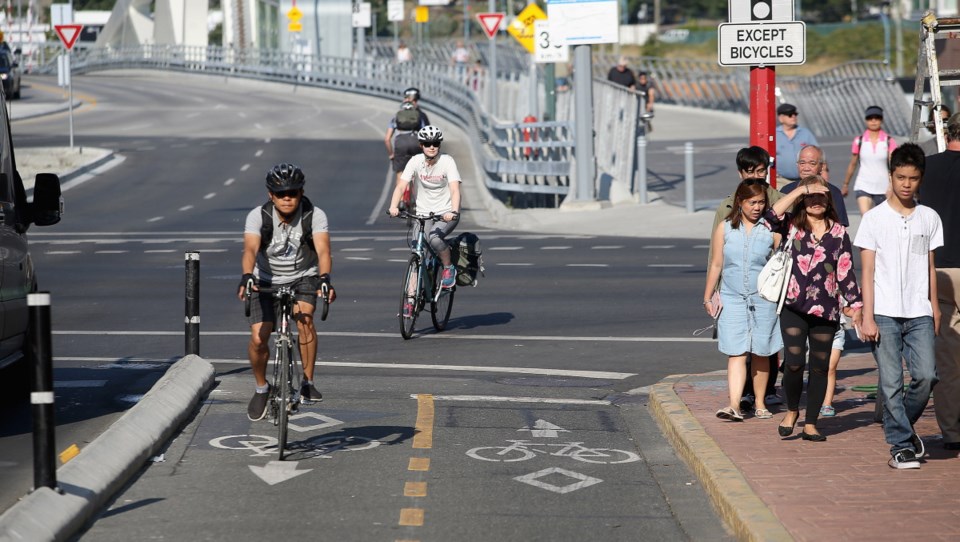Less talk and more staff could see completion of Victoria’s all-ages-and-abilities bike network within three years, city staff say.
City council in December asked staff to look at fast-tracking completion of the 32-kilometre network.
Staff are now recommending “streamlining” community consultation and hiring more temporary staff to complete the project by the end of 2022.
Without making the changes or the hirings, the completion would likely take until 2023 or 2024, says a staff report going to councillors today.
Mayor Lisa Helps said she “absolutely” supports the idea, noting that the United Nation’s Intergovernmental Panel Report on Climate Change concluded there are only 12 years to significantly cut carbon output, meaning there’s no time to lose.
“The IPCC report in October 2018 changed everything. We have less than 12 years now to reduce carbon pollution in the world and in cities significantly,” Helps said.
“The single biggest reduction in carbon pollution is through walking, cycling and transit, so acceleration is necessary. ... But we want to make sure we have public consultation on every phase of the project.”
The staff report notes that the engagement process “was originally designed to minimize dissent and maximize the potential for consensus.
“Reductions in engagement complexity and duration may not meet the public appetite for engagement, but based on recent discussions with council, that risk may be considered acceptable,” it says.
Helps said there will be adequate consultation even if the process is streamlined.
“A paragraph [in the staff report] I took really strong comfort from, I guess, is staff point out that early in the engagement process is where they get the best information,” she said.
“So we’ll still be doing that. On every corridor we’ll go out and we’ll say: ‘Here’s what we’re planning on your street or in your neighbourhood.’ We’ll take that input and we’ll go.”
Staff are recommending reducing the overall number of engagement events and tailoring engagement based on the complexity of each bike lane corridor, shortening the process to three months from the current range of six to eight months.
The are also suggesting hiring additional temporary technical, communications and administrative staff, bundling several projects into a single procurement process for design and/or construction, and streamlining the approval process for a total additional salary costs of $350,000 a year until project completion.
The additional costs would be offset by reducing the overall project duration, the report says.
The city opened the first leg of the cycling network — a protected, two-way bike lane on Pandora Avenue between Cook and Wharf streets — in April 2017, at a cost of $3.4 million.
The second leg, on Fort between Cook and Wharf, opened last May at a cost of $3.27 million. Construction is to start soon on a separated bike lane on Wharf Street between Pandora and Humboldt streets. That is estimated to cost in the neighbourhood of $4.02 million.



